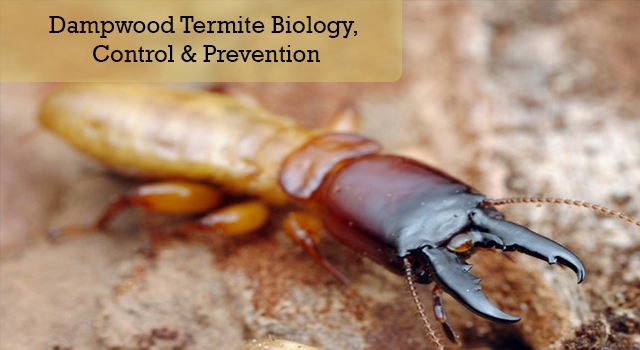View by category
Contact Us
Please fill out the following form and we will contact you within 24 hours.
Dampwood Termite Biology, Control & Prevention
Published: Feb 05
- Language:
Termite Biology
Published: Oct 19
- Language:
Quick Maintenance Tips for Termite Control
Published: Jul 23
- Language:

Dampwood Termite (from the Termopsidae Family) although it is not very common, it thrives in areas where there is damp wood – which as well as how they got their name. Their wings are a tanned median vein which runs next to the radial sector, and in order to survive, they require a regular source of moisture which is why it is normal to find them in decaying wood. This type of termite is normally found in the Pacific Coast and Pacific Southwest Desert regions of the United States of America, and they are the largest termite by sheer size in the country. Dampwood termite soldiers have short mandibles that are smaller than the width of his head. Although not a subterranean species they are subterranean in nature and can travel from one area to another via underground tubes, attacking utility posts, citrus trees, posts, and other wood members that are moist. In areas where they are abundant, this type of termite can cause extensive damage to the foundation if excessive moisture conditions like a pipe/shower pan leak, or inadequate draining/ventilation on the crawl space.
Dampwood termite produces pellets / fecal matter that is similar to that of Drywood Termites, however, they are larger in size and more irregularly shaped. They swarm throughout the entire year but have been found to peal at early fall or late summer, usually swarming at dusk just before the sun sets. The colony average size will vary from 3,000 to 5,000 specimens, of which the vast majority will at the end become a swarmer (king or queen) or a soldier. Meaning that there are no workers cast in the Termopsidae family. As they are growing up, nymphs will do the vast majority of the work and tasks for the colony. They are as well the largest caste in it, making up to 60% of the total members, and vary in size ranging up to 5/8 of an inch.
Being that one of the most important factor/requirements for a Dampwood infestation to occur is moisture, the first and most important step to remediate the situation is to control the excessive moisture condition. After this is completed the infested/damaged wood need to be replaced and the area treated with a termiticide like BASF Termidor (Structural fumigation is not a good control solution for this type of problems). Once the steps are completed the infestation should be fully exterminated and the property restored back to its original condition. There are some steps that one can take in order to avoid having problems with Termopsidae infestations; this includes doing regular maintenance like breaking earth to wood contacts, fixing leaks as they occur, properly ventilating your crawl space, removing cellulose debris from the crawl space and yearly termite inspections. The yearly inspections will be the step that will let you know if the maintenance has been working, if there are any problems in your house and what steps can you take in order to prevent problems from occurring in the future. Infestations have been found in parts of California, but they are a larger problem in the states of Washington and Oregon.
If you believe that you have a Dampwood Termite infestation problem in the greater San Diego area, give us a call at (619) 421 – 2101 so that one of our expert technicians can assist you. This is not a problem that should be taken lightly, so do not wait until they create more damage to your property. You can as well send us a Message Online and we will usually respond within 1 business day. If you have any questions or concerns relating to the topic feel free to contact us as well or leave us a comment in the section below.
Author:
Gilberto A. Cortez
California Licensed Operator and Contractor